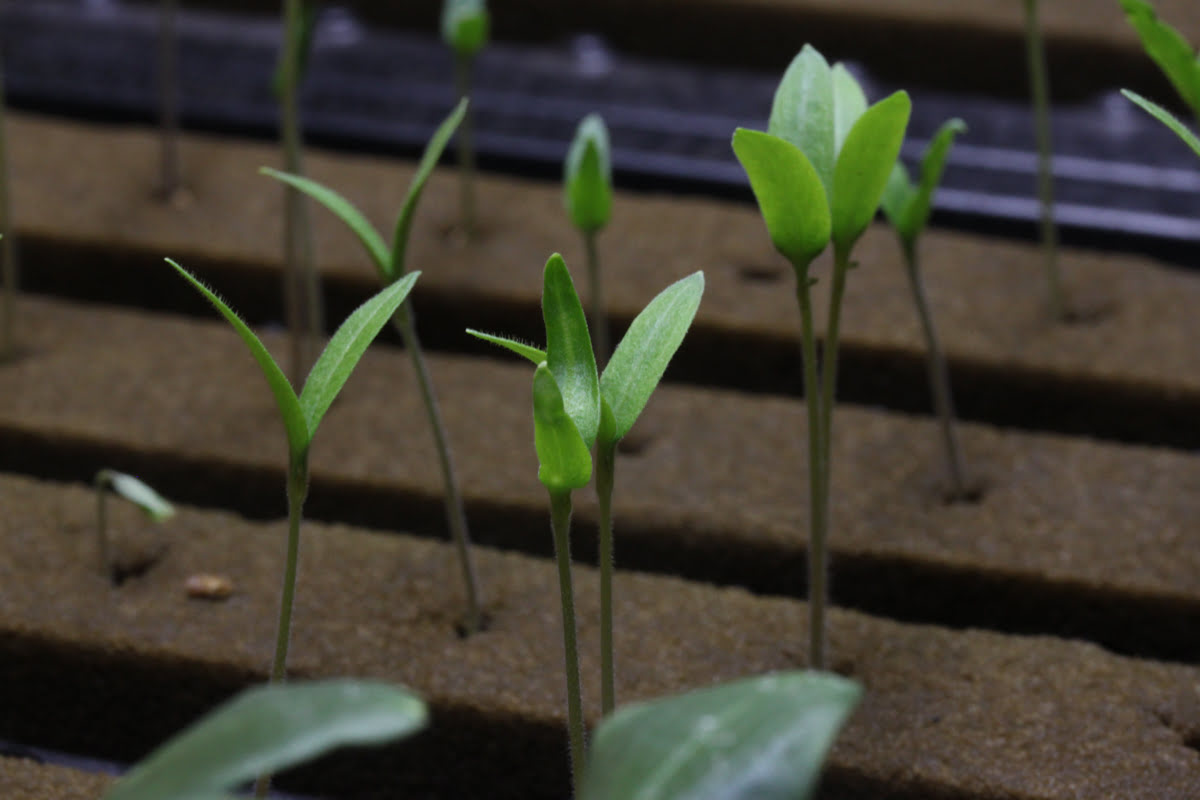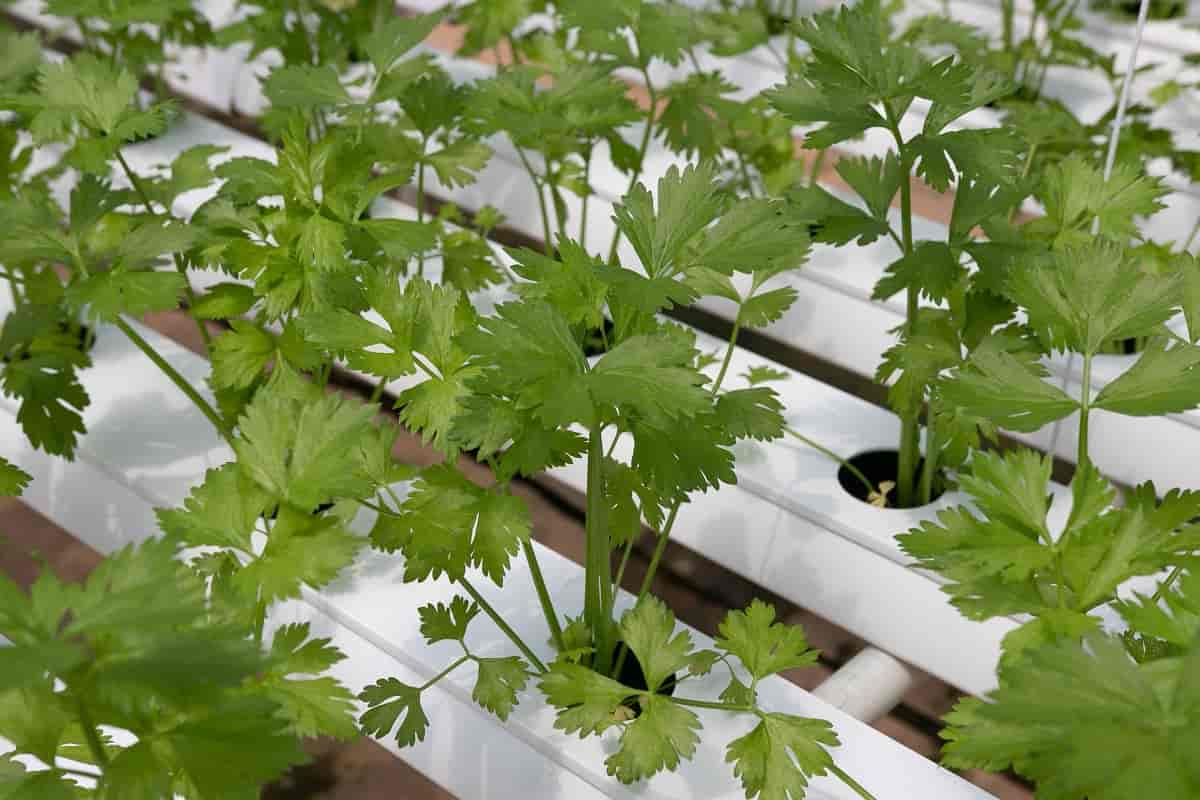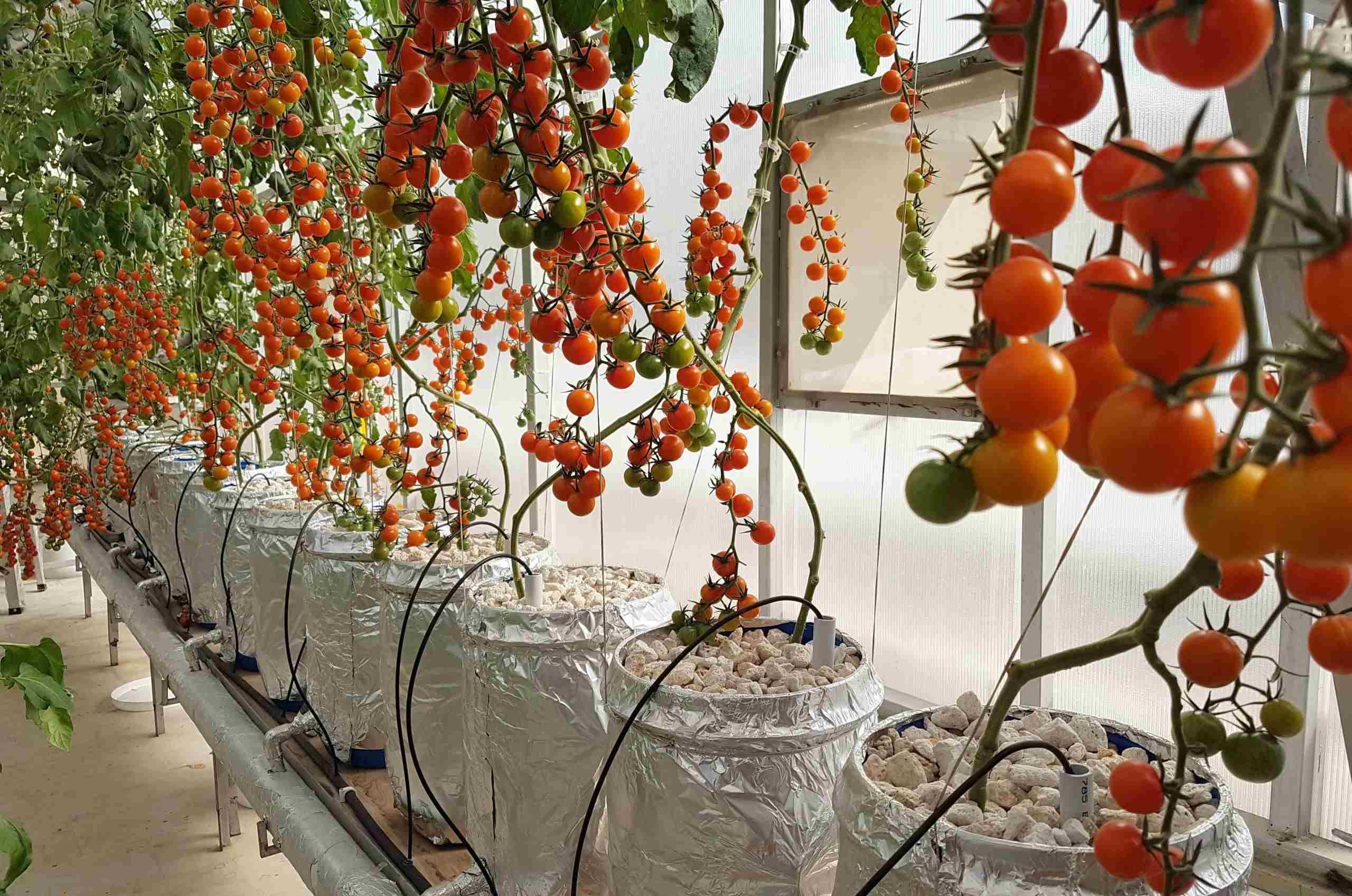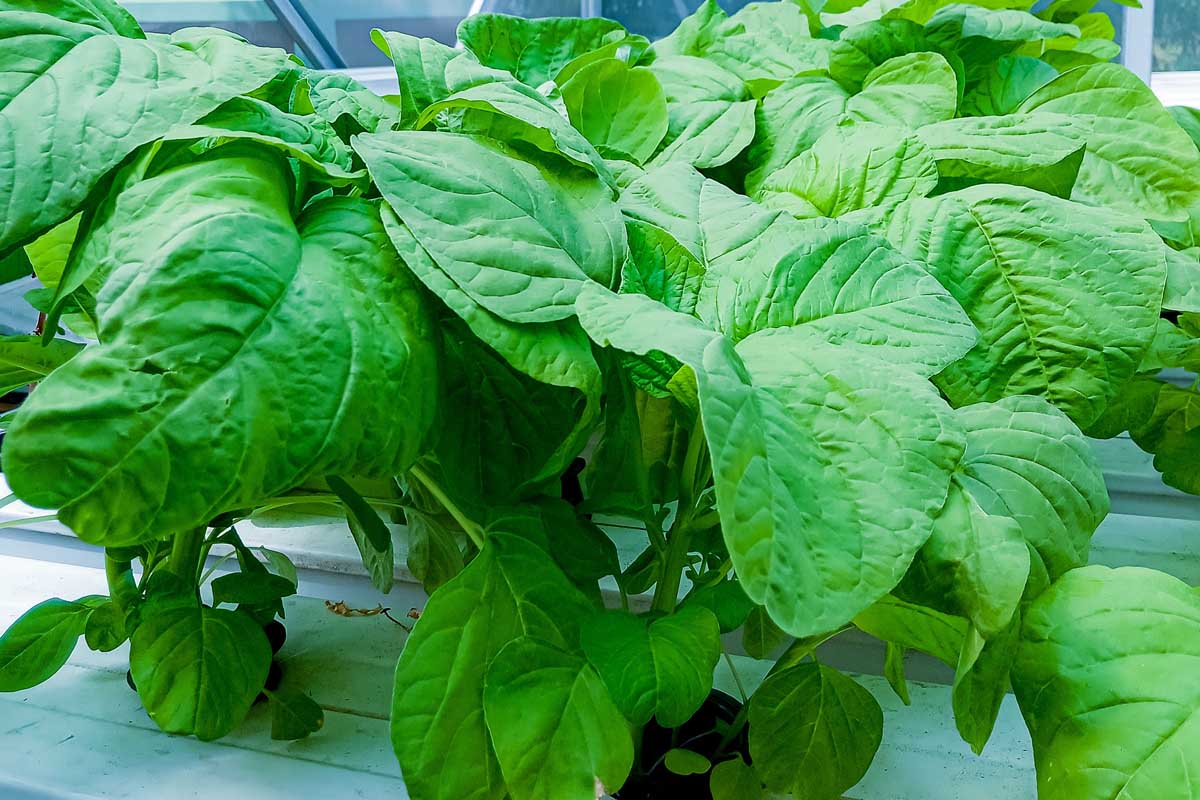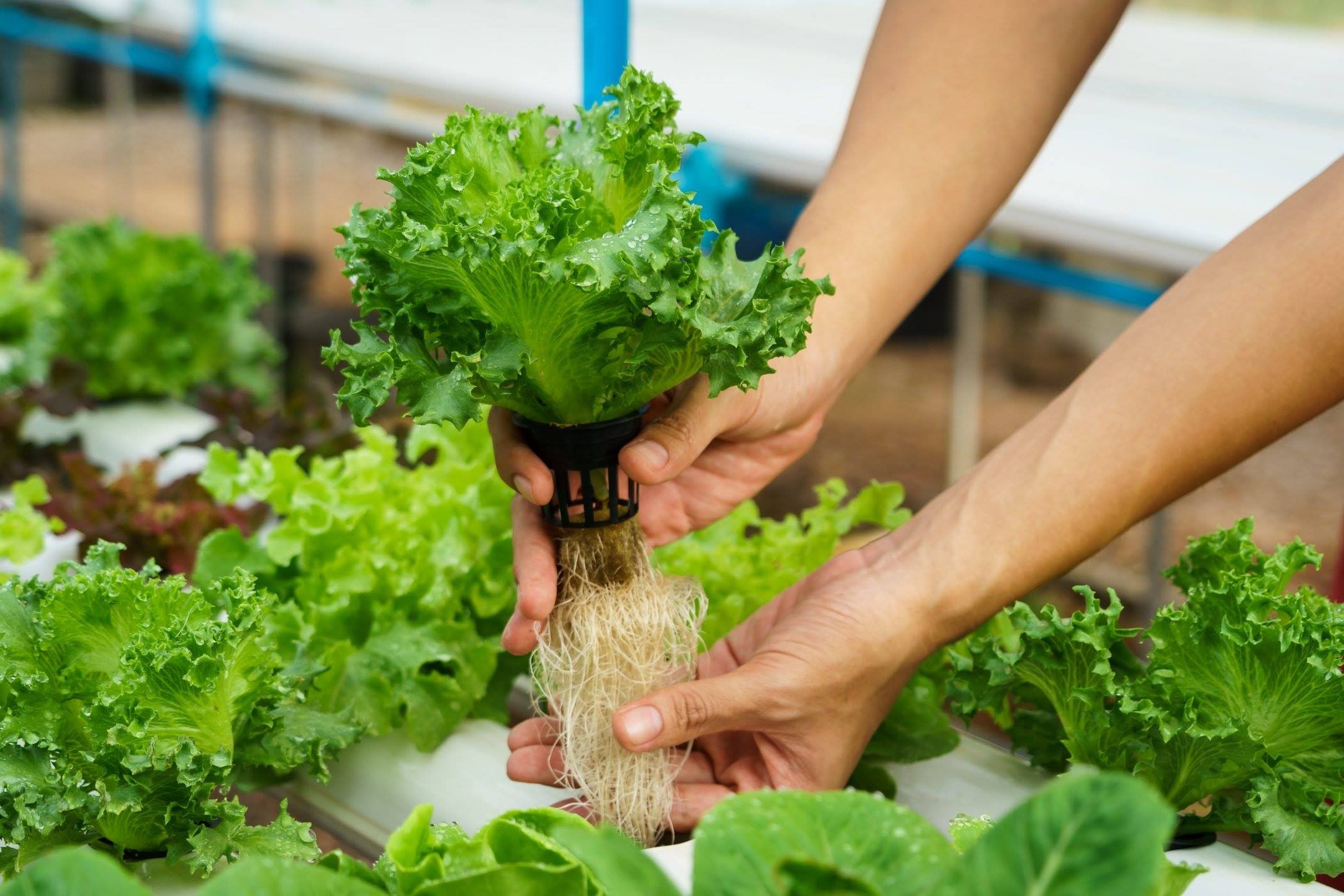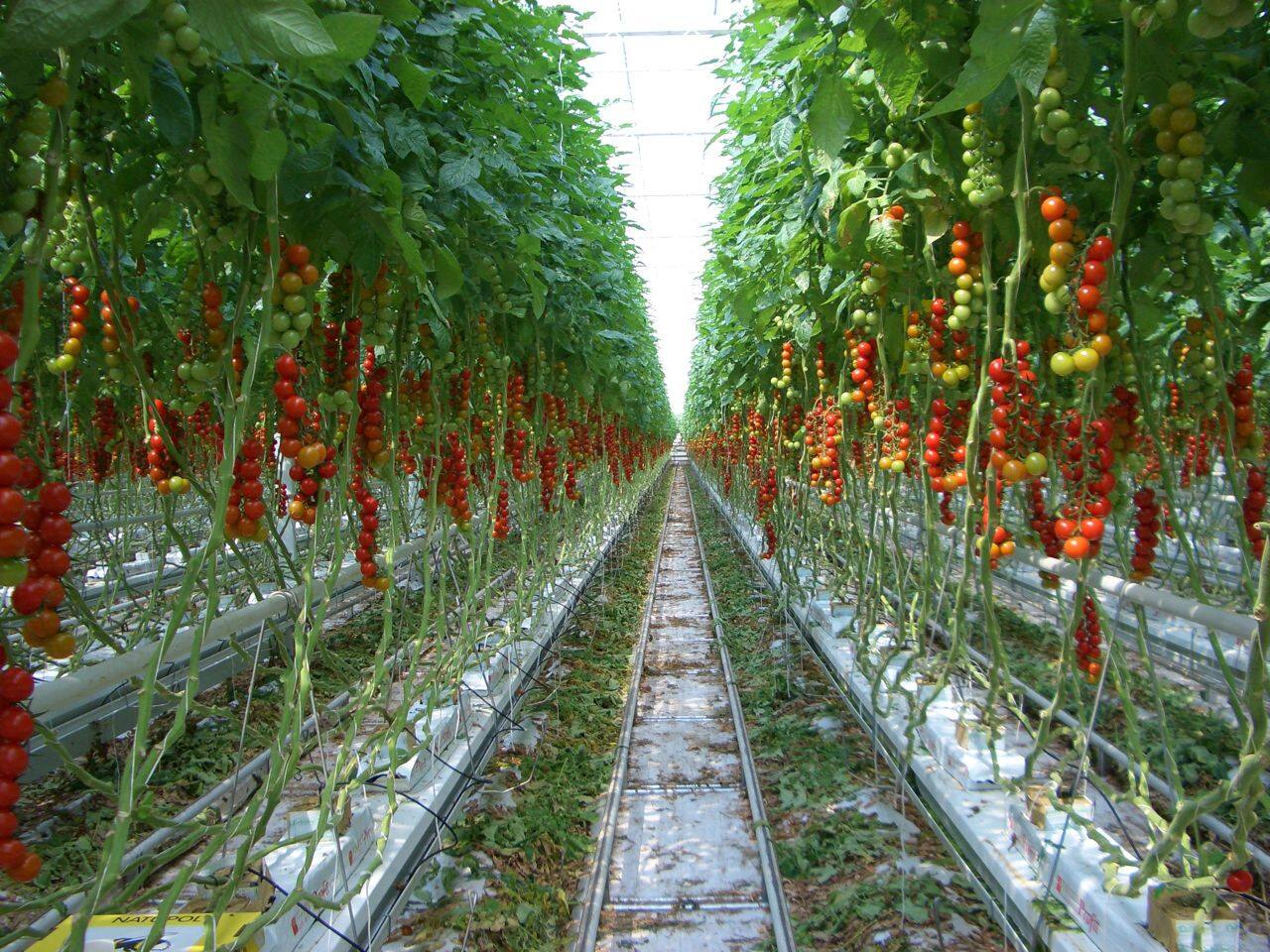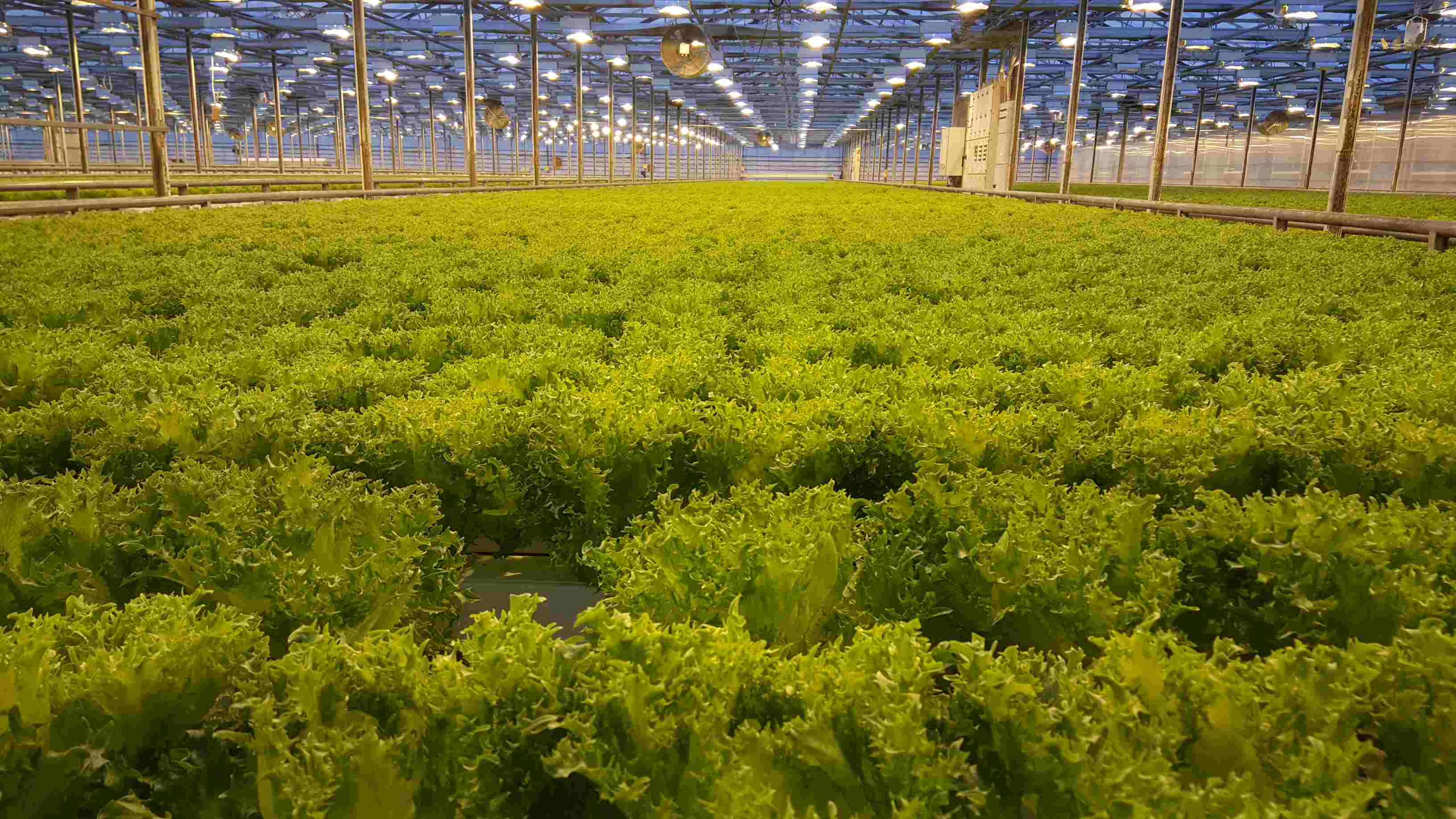Home>Types of Gardening>Container Gardening>How To Grow Hydroponics For Beginners Weed


Container Gardening
How To Grow Hydroponics For Beginners Weed
Modified: January 22, 2024
Learn the basics of container gardening and how to grow hydroponics for beginners. Start growing your own weed easily with these helpful tips!
(Many of the links in this article redirect to a specific reviewed product. Your purchase of these products through affiliate links helps to generate commission for Chicagolandgardening.com, at no extra cost. Learn more)
Table of Contents
Introduction
Welcome to the world of hydroponics, a revolutionary method of growing plants without soil. If you have always dreamed of having a lush and thriving garden, but don’t have the space or the perfect soil conditions, then hydroponics is the answer for you. This innovative technique allows you to grow plants in a nutrient-rich water solution, providing them with all the essential elements they need to flourish.
Hydroponics is not just limited to traditional gardening – it is also gaining popularity in the cannabis community. Growing weed hydroponically offers many advantages over traditional soil cultivation, including faster growth, higher yields, and better control over the growing environment. Whether you are a beginner or an experienced gardener, learning how to grow hydroponic weed can be a rewarding and exciting journey.
In this article, we will guide you through the basics of hydroponics and share valuable tips and techniques to help you successfully grow weed using this method. From setting up your hydroponic system to choosing the right strain, from germination to harvesting, we have got you covered.
But first, let’s explore what hydroponics is all about and why it is becoming increasingly popular among gardeners and cannabis enthusiasts alike.
What is Hydroponics?
Hydroponics is a method of growing plants without soil, relying instead on a water-based nutrient solution to deliver the necessary nutrients and minerals directly to the plant roots. The word “hydroponics” is derived from the Greek words “hydro” meaning water, and “ponos” meaning labor. This technique eliminates the need for traditional soil and allows plants to thrive in a controlled environment.
In a hydroponic system, plants are typically grown in an inert growing medium such as perlite, rockwool, or coconut coir, which provides support for the roots and helps maintain moisture levels. The plants receive their nutrients through a nutrient solution that is mixed with water and delivered directly to the roots. This method allows for precise control over the nutrient levels, pH balance, and water content, ensuring that the plants receive optimal conditions for growth.
One of the main advantages of hydroponics is that it maximizes the efficiency of nutrient uptake by the plants. In traditional soil-based gardening, plants need to exert energy to search for nutrients in the soil. However, in a hydroponic system, the nutrients are readily available to the plant roots, allowing them to focus their energy on growth and development. This results in faster growth rates and higher yields compared to traditional gardening methods.
Furthermore, hydroponics offers greater versatility as it allows for year-round cultivation regardless of the climate or the availability of arable land. The controlled environment of a hydroponic system allows growers to adjust factors such as temperature, humidity, light, and nutrient levels, creating the perfect conditions for plant growth. This level of control also reduces the risk of pests, diseases, and weeds, making hydroponics a cleaner and more sustainable method of cultivation.
Hydroponics is not just limited to large-scale commercial operations. It has also gained popularity among small-scale growers, gardening enthusiasts, and even home gardeners. With the availability of compact and affordable hydroponic systems, it has become easier than ever to set up your own indoor garden and enjoy the benefits of hydroponic gardening.
Now that you have a basic understanding of hydroponics, let’s explore the benefits of growing weed hydroponically and why it might be the right choice for you.
Benefits of Growing Hydroponic Weed
Growing weed hydroponically offers a range of benefits that make it an attractive choice for cannabis enthusiasts. Whether you are a medical marijuana patient or simply enjoy the recreational use of cannabis, here are some of the advantages of hydroponic cultivation:
- Higher Yields: One of the primary benefits of hydroponics is the potential for higher yields compared to traditional soil-based growing methods. In a hydroponic system, plants receive direct access to a balanced nutrient solution, which allows them to grow faster and produce more buds. The controlled environment also minimizes the risk of pests and diseases, ensuring healthy and robust plants.
- Faster Growth: Hydroponic systems provide an ideal environment for plant growth, with consistent access to nutrients, water, and oxygen. This results in accelerated growth rates, allowing you to harvest your weed sooner compared to traditional growing methods.
- Space Efficiency: Hydroponics is a space-saving technique, making it perfect for indoor cultivation, small gardens, or limited spaces. With vertical hydroponic systems or compact setups, you can maximize your growing area and cultivate more plants in a smaller space.
- Water Conservation: Hydroponic systems are designed to be highly water-efficient. Unlike traditional gardening, where water is lost through evaporation and runoff, hydroponics recirculates and reuses water, significantly reducing water wastage. This makes hydroponics an environmentally friendly option and an excellent choice for regions with limited access to water resources.
- Control over Growing Conditions: With hydroponics, you have full control over the growing environment. You can adjust factors such as temperature, humidity, light intensity, and nutrient levels to meet the specific needs of your cannabis plants. This level of control allows you to optimize growth conditions and maximize the quality and potency of your weed.
- Minimized Risk of Pests and Diseases: Soil-borne pests and diseases can wreak havoc on traditional gardens. However, in hydroponics, the absence of soil eliminates the risk of many common pests and diseases. This means you can focus on growing healthy plants without the need for harmful pesticides or fungicides.
- Year-Round Cultivation: Hydroponics allows for year-round cultivation, regardless of the season or climate. By creating an indoor growing space, you can mimic the ideal conditions for cannabis plants and enjoy a continuous supply of fresh weed throughout the year.
As you can see, growing weed hydroponically offers numerous advantages that can enhance your cannabis cultivation experience. Now that you understand the benefits, let’s dive into the process of setting up your hydroponic system.
Setting Up Your Hydroponic System
Setting up your hydroponic system is an exciting and crucial step in growing weed hydroponically. A well-designed system will provide your plants with the optimal conditions they need to thrive. Here are the essential components you’ll need to consider when setting up your hydroponic system:
- Growing Space: Choose a suitable location for your hydroponic garden. It could be a spare room, garage, or even a dedicated grow tent. Ensure that the space has adequate access to electricity and ventilation.
- Hydroponic System: Select the type of hydroponic system that best fits your needs and available space. Some popular options include deep water culture (DWC), ebb and flow, and nutrient film technique (NFT). Each system has its own advantages and requirements, so research and choose the one that suits you best.
- Growing Medium: Decide on the growing medium you will use to support your plants. Common options include perlite, rockwool, coconut coir, and clay pellets. The medium should provide adequate support for the plants while allowing for proper drainage and the retention of moisture.
- Nutrient Solution: Invest in a high-quality nutrient solution specifically formulated for hydroponic cultivation. Ensure that it includes all the essential nutrients required for healthy plant growth, including nitrogen, phosphorus, and potassium, as well as secondary and micronutrients.
- pH and EC Levels: Test and adjust the pH and electrical conductivity (EC) levels of your nutrient solution regularly. Cannabis plants thrive in slightly acidic conditions, with a pH range of 5.5 to 6.5. Monitoring and maintaining the proper pH and EC levels are crucial for nutrient absorption and plant health.
- Lighting: Choose the right lighting system for your hydroponic garden. LED grow lights are energy-efficient and provide a full spectrum of light that promotes vigorous growth and higher yields. Position the lights according to the recommended distance from the plants to avoid light burn.
- Air Circulation and Ventilation: Proper air circulation is important for preventing mold, mildew, and diseases. Use fans to ensure adequate airflow in your growing space. Additionally, consider using carbon filters or an exhaust system to control odor and maintain proper ventilation.
- Monitoring and Automation: Install a system to monitor crucial environmental factors such as temperature, humidity, and CO2 levels. Automated systems can help you maintain optimal conditions by regulating lighting, irrigation, and nutrient delivery.
- Seeds or Clones: Choose high-quality cannabis seeds or clones from reputable sources. Consider the strain, growth characteristics, and desired effects when making your selection. Germinate the seeds or prepare the clones before transferring them to your hydroponic system.
- Water Reservoir and Circulation: Set up a water reservoir to hold and circulate the nutrient solution. Use a reliable pump to distribute the solution to the plants and ensure proper oxygenation.
Remember to thoroughly research and understand the specific requirements of your chosen hydroponic system. Each system has its own nuances, and providing the optimal conditions for your plants is crucial for their success.
Now that you have set up your hydroponic system, the next step is to choose the right strain for your weed garden. Let’s explore the factors to consider when selecting the perfect strain.
Choosing the Right Strain
When it comes to growing weed hydroponically, selecting the right strain is essential for a successful and rewarding cultivation experience. With countless varieties available, each with its unique characteristics and effects, it’s important to consider several factors when choosing a strain for your hydroponic garden:
- Growth Characteristics: Some cannabis strains naturally lend themselves better to hydroponic cultivation. Look for strains that are known for their vigorous growth, resilience to stress, and adaptability to various environmental conditions. Indica-dominant or hybrid strains often exhibit these traits, making them popular choices among hydroponic growers.
- Size and Space: Consider the available space in your hydroponic system when selecting a strain. Choose strains that are more compact, such as “dwarf” or “mini” varieties, if you have limited vertical or horizontal space. This will prevent overcrowding and allow for proper light distribution throughout your garden.
- Lights and Light Intensity: Different strains have varying light requirements. Some strains thrive under intense lighting, while others are more sensitive and may require lower light intensities. Take into account the lighting system you have in place and choose a strain that matches its capabilities to ensure optimal photosynthesis and growth.
- Flowering Time: Consider the flowering time of the strain you choose. Some strains have shorter flowering periods, allowing for quicker harvests. This can be advantageous if you desire faster turnover and more frequent harvests. On the other hand, if you have the time and patience, you may opt for strains with longer flowering periods, which can reward you with larger yields and potentially stronger effects.
- Desired Effects and Cannabinoid Profile: Different strains offer different effects due to their unique cannabinoid profiles. Consider the desired effects you want to achieve, such as relaxation, pain relief, or enhanced creativity. Research the strain’s THC and CBD levels, as well as its terpene profile, to better understand the effects it may produce.
- Genetics and Breeders: Look for reputable breeders and geneticists when selecting strains. Well-established breeders often have a track record of producing stable and reliable genetics. This ensures that you are working with quality genetics that will result in consistent growth patterns and desirable traits.
- Personal Preferences: Don’t forget to consider your personal preferences as a grower and consumer. Research strains that align with your taste preferences in terms of aroma, flavor, and overall experience. Experimenting with different strains can also be a fun and educational journey, allowing you to discover new favorites.
Remember that each strain offers its own unique qualities, so exploring different strains can bring excitement and diversity to your hydroponic garden. Take the time to research and understand the specific requirements and characteristics of the strains you choose, as this will greatly contribute to the success of your cultivation.
Now that you have selected your strains, it’s time to learn about the germination and propagation process. Let’s explore the next step in hydroponic weed cultivation.
Germination and Propagation
The germination and propagation stage is where your hydroponic journey truly begins. This crucial step sets the foundation for healthy and robust plants. Follow these steps to ensure successful germination and propagation:
- Seed Selection: Start by selecting high-quality cannabis seeds from reputable sources. Look for seeds that are fresh, viable, and genetically stable. Consider the strain’s characteristics and your desired outcome when making your selection.
- Preparation: Before germinating your seeds, it’s important to prepare them properly. Some growers prefer to scarify or slightly crack the seed coat to encourage faster and more successful germination. You can do this by gently filing or sanding the seed coat, being careful not to damage the delicate embryo within.
- Hydration: Moisture is vital for seed germination. Soak your seeds in room temperature or slightly warm water for about 12 to 24 hours. This process helps to soften the outer shell, allowing water to penetrate and activate the germination process.
- Germination Medium: Choose a suitable germination medium for your seeds. Rockwool cubes, rapid rooters, or moist paper towels are popular choices. Place the hydrated seeds in the chosen medium, ensuring they are evenly spaced and slightly inserted into the medium to maintain moisture contact.
- Warmth and Darkness: Seeds require warmth and darkness to germinate successfully. Place the germination medium in a warm and dark environment, maintaining a consistent temperature between 70 to 85°F (21 to 29°C). This encourages faster germination and reduces the risk of fungal growth.
- Moisture and Airflow: Keep the germination medium moist but not overly saturated. Mist the medium with water or lightly water it to maintain moisture levels. Additionally, ensure proper airflow around the seeds to prevent the buildup of excess moisture and reduce the risk of mold or rot.
- Patience: Germination can take anywhere from a few days to a couple of weeks, depending on the strain and conditions. Be patient and resist the temptation to disturb the seeds during this critical stage. Make sure to regularly check the moisture level and adjust if necessary.
- Transplanting: Once your seedlings have developed strong roots and established their first set of leaves, it’s time to transplant them into your hydroponic system. Carefully transfer them to the chosen growing medium, ensuring the roots are properly covered and supported.
- Propagation: If you prefer to use clones instead of seeds, propagation is the way to go. Take cuttings from a healthy and mature donor plant, selecting the most suitable branches. Dip the cut end of the cutting in a rooting hormone to encourage root development, then insert it into a propagation medium such as rockwool cubes or a rooting gel. Provide the proper lighting and humidity levels to support root growth.
Remember to handle your germinating seeds or cuttings with care and maintain a clean and sterile environment to minimize the risk of contamination. Patience, attention to detail, and proper techniques will ensure successful germination and propagation in your hydroponic garden.
Now that your plants are germinated or propagated, the next step is to provide them with the necessary nutrients and maintain the proper pH levels. Let’s explore the importance of nutrients and pH balance in hydroponic weed cultivation.
Nutrients and pH Levels
Proper nutrition and maintaining the correct pH levels are crucial for the healthy growth and development of your hydroponic weed plants. In a hydroponic system, plants rely on a nutrient-rich solution as their primary source of essential minerals and elements. Here’s what you need to know about nutrients and pH levels in hydroponic cultivation:
Nutrient Solution: A nutrient solution is a mixture of water and dissolved nutrients that provide the necessary elements for plant growth. These nutrients include macronutrients such as nitrogen, phosphorus, and potassium, as well as secondary nutrients like calcium and magnesium, and micronutrients such as iron and zinc. It is crucial to use a high-quality hydroponic-specific nutrient solution to ensure that your plants receive all the essential nutrients in the proper proportions.
Nutrient Monitoring and Feeding: Regularly monitor the nutrient levels in your hydroponic system to ensure your plants are receiving the proper nutrition. This can be done through electrical conductivity (EC) meters and pH testing kits. The EC meter measures the concentration of dissolved minerals in the water, while the pH testing kit measures the acidity or alkalinity of the solution. Adjust the nutrient solution as needed by adding more nutrients or diluting it with water to maintain the optimal nutrient levels.
pH Balance: Maintaining the proper pH levels is essential for nutrient uptake and overall plant health. The pH scale ranges from 0 to 14, with 7 being neutral. Cannabis plants prefer a slightly acidic pH, ideally between 5.5 and 6.5. At this range, nutrients are most readily available to the roots. Regularly monitor and adjust the pH of your nutrient solution using pH adjustment chemicals. pH levels that are too high or too low can lead to nutrient deficiencies or toxicity, stunting plant growth.
Nutrient Uptake: Nutrients are absorbed by plant roots through a process called ion exchange. In hydroponics, where plants are grown without soil, the nutrients are directly available to the roots in the nutrient solution. As the plant roots make contact with the solution, they take in the necessary nutrients to support growth and development. This direct access to nutrients allows for faster and more efficient absorption, leading to healthier and more robust plants.
Monitoring and Adjusting: Regularly monitor and adjust the nutrient solution and pH levels based on your plants’ growth stage and specific requirements. Different strains may have varying nutrient needs, so it’s essential to pay attention to individual plant health, growth patterns, and nutrient deficiencies. Regularly check your plants for signs of nutrient imbalances or deficiencies, such as yellowing leaves or stunted growth, and make the necessary adjustments to your nutrient solution.
Water Quality: The quality of your water can have an impact on the nutrient uptake and overall health of your plants. Ideally, use clean, filtered water with low levels of chlorine and other impurities. If your water source contains high levels of minerals or contaminants, consider using a reverse osmosis (RO) filtration system to purify the water before mixing it with nutrients.
Proper nutrient management and maintaining the correct pH levels are fundamental in hydroponic cultivation. They ensure that your plants have access to the essential minerals they need for growth, and they enable you to prevent nutrient deficiencies or toxicities. By providing your plants with a well-balanced nutrient solution and monitoring pH levels, you will set the foundation for healthy and thriving hydroponic weed plants.
Next, let’s explore the importance of lighting and temperature in hydroponic weed cultivation.
Lighting and Temperature
When it comes to hydroponic weed cultivation, providing the right lighting and maintaining optimal temperature levels are essential for healthy growth and maximum yield. Let’s explore the importance of lighting and temperature in your hydroponic garden:
Lighting: Cannabis plants require proper lighting for photosynthesis, the process that converts light energy into chemical energy for plant growth. In indoor hydroponic setups, artificial lighting is used to mimic natural sunlight. LED (light-emitting diode) grow lights are popular for hydroponic cultivation due to their energy efficiency, longevity, and customizable spectrum. Consider the light intensity, color spectrum, and photoperiod (lighting schedule) when choosing your grow lights. Seedlings and young plants benefit from higher blue spectrum light, while flowering plants require a boost of red spectrum light to promote bud development.
Light Intensity: The intensity of light affects the growth and development of cannabis plants. Too much light can cause light burn and heat stress, leading to reduced growth and even plant damage. On the other hand, insufficient light can result in stretched and weak plants. Maintain the recommended distance between the grow lights and the canopy of your plants to ensure the optimal light intensity for each stage of growth. Adjust the height of the lights as your plants mature to provide uniform coverage and prevent light deprivation.
Lighting Schedule: Photoperiod, or the duration of light and darkness, plays a crucial role in cannabis growth. During the vegetative stage, provide your plants with 18-24 hours of light per day. This extended light period encourages vegetative growth. When you’re ready to induce flowering, reduce the light period to 12 hours of light and 12 hours of uninterrupted darkness. This light schedule triggers the flowering phase and stimulates bud development.
Temperature: The temperature of your hydroponic environment can significantly impact plant growth and development. Cannabis plants thrive in temperatures between 70-85°F (21-29°C) during the day and slightly cooler temperatures of 65-75°F (18-24°C) during the night. Maintaining a consistent temperature range is crucial, as extremes can cause stress and affect plant health. High temperatures can lead to heat stress, root problems, and decreased resin production. On the other hand, low temperatures can slow plant growth and increase the risk of mold and fungal diseases.
Air Circulation and Ventilation: Proper air circulation and ventilation are necessary to maintain ideal temperature levels, prevent heat buildup, and reduce humidity. Use fans to promote airflow and prevent stagnant pockets of air that can contribute to mold or pests. Ensure that air is evenly distributed throughout the growing space, optimizing gas exchange and transpiration for healthy plant development. Consider installing an exhaust system or using carbon filters to manage odors and regulate humidity levels effectively.
Temperature Control: Use temperature-monitoring equipment to keep track of temperature fluctuations in your grow space. If necessary, employ cooling devices such as air conditioners, fans, or ventilation systems to maintain optimal temperatures. In colder climates, consider using heaters or insulation to prevent temperature drops. Proactively address temperature issues to ensure a stable and favorable environment for your hydroponic weed plants.
By providing the correct lighting and maintaining optimal temperature conditions, you can maximize the growth, yield, and overall health of your hydroponic weed plants. Remember to regularly monitor and make necessary adjustments to lighting and temperature based on the specific needs of your plants as they progress through different growth stages.
Next, we will explore the critical aspects of watering and oxygenation in your hydroponic system.
Watering and Oxygenation
Watering and oxygenation are two essential factors in a successful hydroponic system. Proper hydration and oxygenation of your plants’ roots ensure optimal nutrient uptake and overall plant health. Here’s what you need to know about watering and oxygenation in your hydroponic garden:
Watering: Unlike traditional soil-based cultivation, hydroponics requires a different approach to watering. Instead of watering on a schedule, it’s important to maintain a constant flow or availability of water to the plants’ root systems. This can be achieved through various hydroponic systems such as deep water culture (DWC), nutrient film technique (NFT), or drip irrigation. Monitor the moisture levels in your growing medium regularly, ensuring it remains consistently damp but not oversaturated to prevent oxygen deprivation and root rot.
Irrigation System: Choose an irrigation system that suits your hydroponic setup and plants’ needs. Some systems use pumps to circulate nutrient solution over the roots, while others rely on gravity or capillary action. Whether you use a recirculating or non-recirculating system, ensure that water is distributed evenly to all plants to avoid uneven nutrient uptake, nutrient imbalances, or salt buildup.
Oxygenation: Maintaining proper oxygen levels in the root zone is crucial for healthy plant growth. In hydroponics, where plants are grown in a soilless medium, oxygen is supplied through the oxygenation of the nutrient solution. As water is circulated or aerated, oxygen is absorbed into the solution, ensuring that the roots receive sufficient oxygen. Oxygenation can be achieved through the use of air stones, air pumps, or diffusers that release small air bubbles into the nutrient solution, promoting oxygen exchange and preventing the roots from becoming suffocated.
Water Temperature: Pay attention to the temperature of your water, as it can have a significant impact on your plants. Cannabis plants prefer a slightly cooler water temperature between 65-75°F (18-24°C). Maintain proper water temperature by monitoring and adjusting the ambient temperature of the room or by using water chillers or heaters, depending on your specific needs. Avoid extreme temperature fluctuations, as they can shock or stress the plants and affect their overall health and growth.
Flushing: Regularly flushing your hydroponic system with fresh, pH-balanced water is essential for preventing nutrient buildup and maintaining proper plant health. Flushing helps to remove excess salts, minerals, and any potential nutrient imbalances that can accumulate over time. It also promotes better nutrient absorption and helps to prevent nutrient lockout, which can occur when excessive levels of certain nutrients impede the uptake of others. Flushing is typically done during the last few weeks of the plant’s flowering phase to ensure clean and flavorful buds.
Monitoring: Regularly monitor the moisture levels, oxygenation, and temperature of your hydroponic system. Keep an eye on your plants for signs of over or underwatering, such as wilting or stunted growth. Adjust watering and oxygenation as needed based on the specific requirements of your plants, environmental conditions, and nutrient solution concentrations.
Proper watering and oxygenation are critical for a thriving hydroponic garden. By maintaining consistent hydration and adequate oxygen levels in the root zone, you will ensure optimal nutrient absorption, lush foliage, and healthy overall plant development.
Next, we will explore the importance of monitoring and troubleshooting common issues that may arise in your hydroponic weed cultivation.
Monitoring and Troubleshooting
In hydroponic weed cultivation, monitoring and troubleshooting are essential aspects of maintaining a healthy and thriving garden. Regular monitoring allows you to identify and address issues before they become severe and impact plant growth. Here are some key points to consider when it comes to monitoring and troubleshooting in your hydroponic system:
Environmental Factors: Monitor critical environmental factors such as temperature, humidity, CO2 levels, and light intensity. Fluctuations or imbalances in these factors can negatively impact plant growth and development. Use digital hygrometers, thermometers, CO2 monitors, and light meters to ensure that your plants’ environment remains within the optimal range for their growth stage.
Nutrient Levels and pH: Regularly check and adjust nutrient levels and pH in your hydroponic system. Use electrical conductivity (EC) meters and pH testing kits to measure the nutrient concentration and acidity/alkalinity of the solution. Keep a close eye on nutrient deficiencies or toxicities, as well as pH fluctuations, as these can affect the overall health and nutrient uptake of your plants.
Inspecting Plant Health: Regularly inspect your plants for any signs of health issues or abnormalities. Check for discolored leaves, spotting, wilting, pests, or unusual growth patterns. These can be indicators of nutrient deficiencies, pests, diseases, or environmental stress. Promptly address any problems to avoid further damage to your plants.
Pests and Diseases: Monitor your hydroponic garden for pests and diseases, as these can quickly spread and damage your plants. Inspect the foliage and stems regularly for any signs of pests such as aphids, spider mites, or fungus gnats. Look out for symptoms of common cannabis diseases like powdery mildew, root rot, or bud rot. Implement preventive measures such as integrated pest management strategies and maintain a clean and hygienic growing environment to reduce the risk of infestations and infections.
Nutrient Deficiencies and Toxicities: Pay attention to any signs of nutrient deficiencies or toxicities in your plants. Nutrient deficiencies can manifest as yellowing or chlorosis of leaves, stunted growth, or poor bud development. Excessive nutrient concentrations can lead to nutrient burn, tip burn, or leaf curling. Familiarize yourself with the symptoms of nutrient imbalances and adjust your nutrient solution accordingly to maintain optimal nutrient levels for your plants.
Reservoir Maintenance: Regularly clean and maintain your water reservoir to prevent the buildup of bacteria, biofilm, or algae. Remove any debris or plant matter that may decompose and affect water quality. Keep an eye on water levels and top up as needed to maintain proper hydration of your plants.
Record Keeping: Maintain a journal or record of your hydroponic garden’s progress. Document important parameters such as nutrient concentrations, pH levels, environmental conditions, and any observations or changes you make. This record will help you identify patterns, track improvements, and troubleshoot issues more effectively in the future.
Seeking Advice: If you encounter challenges or issues that you are unsure how to address, don’t hesitate to seek advice from experienced hydroponic growers, online forums, or local gardening communities. Collaboration and knowledge-sharing can help you overcome obstacles and improve your cultivation practices.
Regular monitoring and proactive troubleshooting are key to maintaining a healthy and thriving hydroponic garden. By staying vigilant and addressing issues promptly, you’ll maximize the potential of your plants and enjoy a successful harvest.
Lastly, let’s delve into the essential steps of harvesting and curing your hydroponic weed.
Harvesting and Curing
After months of careful cultivation, it’s time to harvest and cure your hydroponically grown weed. Proper harvesting and curing techniques are essential for preserving the quality, potency, and flavor of your buds. Here are the essential steps to follow:
1. Harvesting: Determine the optimal time to harvest your plants by observing the trichomes. Trichomes are small resinous glands on the buds that contain cannabinoids and terpenes. Use a magnifying glass or a microscope to examine the trichomes. Harvest when most of them have turned cloudy or slightly amber in color. This indicates peak cannabinoid production. Trim the plants carefully, removing any large fan leaves.
2. Drying: Hang the trimmed plants upside down in a dark, well-ventilated room with temperature and humidity control. Maintain a temperature of around 65-75°F (18-24°C) and a humidity level of around 45-55%. This slow drying process allows the buds to retain their flavors and aromas. Ensure good air circulation to prevent mold and fungus from forming.
3. Trimming: Once the buds are dry, it’s time to trim them. Remove any remaining leaves as they can diminish the overall quality and aesthetic appeal of the buds. Use sharp, clean trimming scissors to carefully manicure the buds, leaving behind only the desirable flowers.
4. Curing: Place the trimmed buds in airtight containers such as glass jars or vacuum-sealed bags. This will allow the buds to undergo a curing process. Curing helps to enhance the potency, flavor, and smoothness of the buds by further breaking down chlorophyll and improving terpene profiles. Store the jars in a cool, dark place with a temperature of around 60-70°F (15-21°C) and a humidity level of about 55-65%. Open the jars briefly each day to allow fresh air in and release any excess moisture.
5. Monitoring: Monitor the moisture content of the buds during the curing process. The initial curing stage typically takes two to three weeks. Check for any signs of mold development or excessive moisture, as this can ruin the entire harvest. If you notice any mold or excessive moisture, remove the affected buds immediately.
6. Long-term Storage: Once the buds have completed the initial curing phase, you can transfer them to airtight containers for long-term storage. Use opaque containers to block out light and store them in a cool, dark place with controlled humidity levels. Make sure to label and store different strains separately to preserve their unique characteristics.
7. Testing and Enjoying: After the curing process, it’s time to enjoy the fruits of your labor. Test the potency, aroma, and flavor of your hydroponically grown weed. Take note of the effects and make adjustments to your cultivation techniques or strain selection based on your preferences and experiences.
Remember, patience is key during the harvesting and curing process. Well-cured buds will reward you with superior taste, aroma, and potency. Take care to maintain proper storage conditions to preserve the quality of your hydroponically grown weed over an extended period.
Now that you’ve reached the end of your hydroponic weed cultivation cycle, reflect on your experience and celebrate the successful harvest. Feel proud of your dedication and newfound knowledge in the world of hydroponic gardening.
Conclusion
Congratulations on completing your journey into the world of hydroponic weed cultivation! You have learned the essential techniques and principles that will help you successfully grow high-quality cannabis in a controlled and efficient manner. From setting up your hydroponic system to selecting the right strain, from germination to harvesting and curing, you have gained valuable knowledge and experience.
Hydroponics offers numerous benefits for growing weed, including higher yields, faster growth rates, precise control over growing conditions, and the ability to cultivate year-round regardless of the climate. By providing your plants with a nutrient-rich water solution, maintaining optimal pH levels, and ensuring proper lighting and temperature, you have created an ideal growing environment.
Throughout the process, monitoring and troubleshooting were essential for maintaining plant health and preventing issues from escalating. Regularly assessing environmental factors, nutrient levels, and the overall condition of your plants allowed you to address problems promptly and ensure their wellbeing.
Harvesting and curing marked the culmination of your hard work. Properly timing the harvest, carefully drying and trimming the buds, and undergoing the curing process all contribute to the enhancement of aroma, potency, and flavor. The end result is a product to be proud of – hydroponically grown weed that offers a superior experience.
As you continue on your journey as a hydroponic gardener, remember to keep honing your skills, experimenting with different strains, and refining your techniques. Each cultivation cycle presents an opportunity for continuous learning and improvement.
Lastly, your knowledge in hydroponics extends beyond cannabis cultivation. The principles and techniques you have learned can be applied to various other plants, whether it’s growing herbs, vegetables, or even orchids. The possibilities within the world of hydroponics are vast, offering you the chance to explore and cultivate a wide range of plants.
Embrace the marvels of hydroponics and enjoy the rewards of your hard work. The journey has just begun, and there is always more to discover and achieve in the realm of hydroponic gardening. Happy growing!
